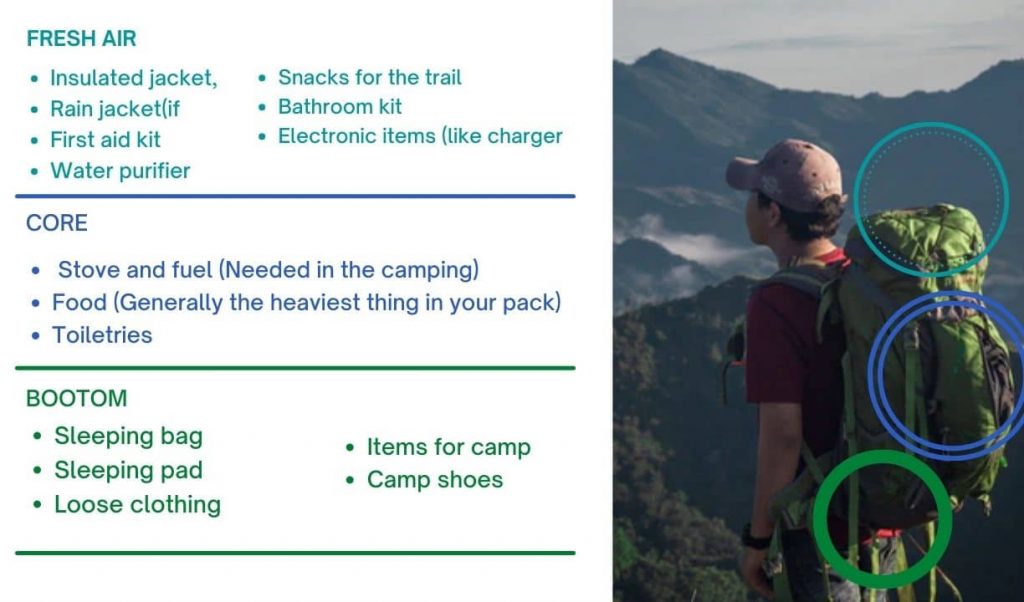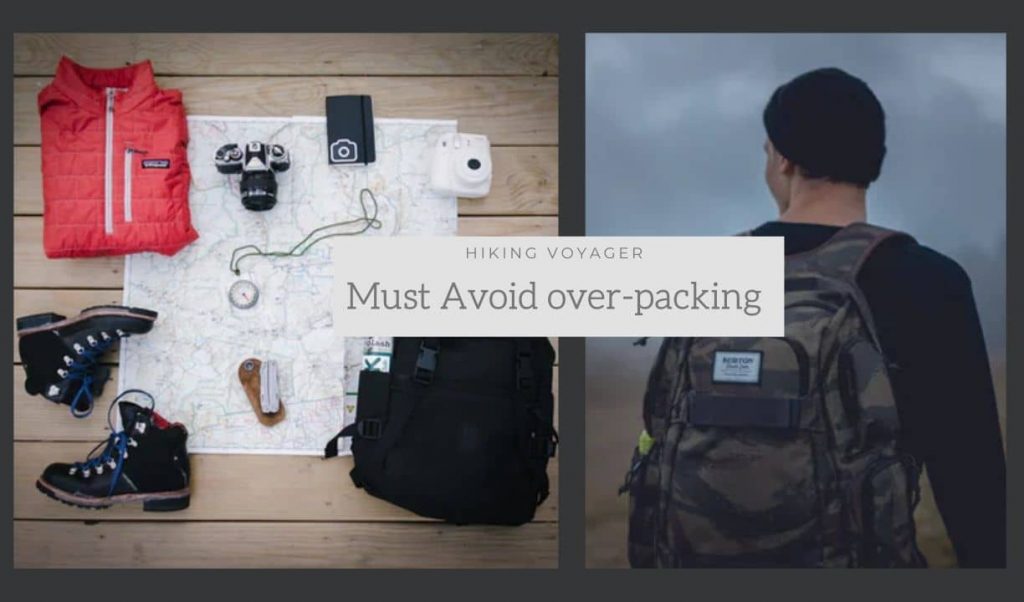For our refreshments and peace of mind, we often go out to explore nature. If we are out for a vacation or family reunion, then putting our staff in a bag and calling it good is all ok. But, if we are hitting trail then it is not the same. Because in that case, we have to carry our belongings for hours, days or even weeks and that’s why we should know How To Pack a Hiking Backpack.
We have to be careful in how to pack a backpack with clothes so that we can easily go hiking and comfortably carry the weight and can hike longer. So, we should pack in a way where there will go all the needed items and as well as some relaxing items and also have to keep in mind that the weight should not be excessively high which can give us a tough time to carry the weight.
Sometimes a backpack can be a literal pain in the neck. That’s why it is essential to learn how to pack a backpack and evenly distribute weight so that we can hike longer and that too with pain-free.
How to Pack a Hiking Backpack
When we pack our hiking backpack, we should keep in mind that we must keep our necessary things in the backpack which we must need. Also, we should keep in mind that we do not keep unnecessary things in our backpacks which are unnecessary.
Sometimes the list of necessary items is also too long. Even with a lot of gear, it is possible to feel like we are carrying a light load if we have a well-packed pack. By arranging the staff orderly in our backpacks, we can increase our comfort zone. Here are some basic steps which we can follow to keep our things organized way.

We can do packing in three zones:
- Bottom zone
- Core zone
- Top zone
Bottom Zone :
We should always pack the bottom zone first. Because by doing it we can easily find necessary items with no effort. Always remember the items should be in the center so that the backpack remains well balanced. We will have to keep the heavy things in the center of the bag. Because it will help us to easily carry the bag and balances the bag.
What Goes In The Bottom Zone :
It is good for bulky gear and item which are not needed until camp. We can compress anything big and bulky into the bottom goes in it. As we know, non-essential items of the trail go here.
Bulky items we won’t need before making camp include –
- Sleeping bag
- Sleeping pad
- Loose clothing
- Items for camp
- Camp shoes (if you like to take them for your comfort while hiking)
Any layers like long underwear that you want to use to feel comfortable.
Core Zone :
We should use the core zone for heavier items. By keeping cumbersome things in the center and as close to your back as possible you can relieve unnecessary stress. It also will help us find the things we want easily.
What goes in the core zone :
- Stove and fuel (Needed in the camping)
- Food (Generally the heaviest thing in your pack)
- Toiletries
Top Zone :
This is the most important part. In this part, we should keep the essential items that one might need often on the trail. It is the zipper part.
What goes in the top zone :
- Insulated jacket,
- Rain jacket(if it is the rainy season then it is the must item to keep in a backpack)
- First aid kit (It is the most essential product. We could need it at any time)
- Water purifier
- Snacks for the trail
- Bathroom kit (Like toilet paper, hand sanitizer, and a bag to pack out used toilet paper)
- Electronic items (like charger, power bank).
There are also some loops on the side of the backpack which are used to secure long and bulky items to your pack such as trekking poles, tent poles, ropes, shovel.
You can use gear ties to secure anything to your pack that might be outside if you don’t have so many loops to use. You can also read what to pack for camping.
Accessories pockets
There are various kinds of pockets, like lid pockets, front pockets, side pockets, and hip belts. Some pockets even have a lot of smaller pockets insides. We can use these pockets for keeping the following items.
- Map
- Compass
- GPS
- Sunglass
- Sunscreen cream
- Lip balm
- Headlamp
- Bug spray
- ID card and an ATM card
It may often happen that we carry out a lot of extra and unwanted things that we don’t need that much. These cause a lot of weight and problems. It is very important to know which things we do really need and which we don’t need. So, we should think for a while about what to take and what to not. Because overweight backpack can cause difficulty for us.

How to avoid over-packing
To avoid over-packing, we have to make a list of which things we will need and which things are not so important. By doing this list we will have to keep our things as per the list. To make it easier, we can follow the following three steps.
First, we have to put out everything we want to take on our hike from the sleeping bag, clothes, food, and shelter we need.
Then we have to move the essential items into a different pile. Here essential means essential not the luxurious one. One should not cheat with the essential items by exchanging them with luxurious items.
Now, eliminate half of the gear left in the ‘luxury’ pile.
If there’s still a lot of room in your pack after packing then treat yourself by taking some luxurious items. But if it still overloads your pack after paring down your gear, keep leaving leisure items until everything fits.
How do I pack my backpack with comfortable
Maintain your center of gravity. We should keep Water, Food, and cooking gear between your shoulder blades, where they will not swing around and knock you off your stride. Keep them in less dense items like clothing. It will give you much comfort.
Should I pack with compression sacks
Smart packing isn’t always enough to keep your gear where it’s supposed to be. Sometimes one needs a little extra organizational help. In that situations, compression sacks are an excellent help.
- They remove excess air from your load.
- More space means more stuff.
- They help you prepare your gear by type.
Most of them are waterproof, so you won’t have to worry about getting your clothing wet at the end of the day.
How do I prepare my backpack for rain?
You do not need it to get your backpack wet because of the rain. Here are some simple tricks to avoid it. See more rain tips.
Backpack rain cover :
Purchase a rain cover for your backpack to avoid raindrops. This layer will stop water from damping the outside of your pack and it will provide a shield for your gear.
Compression sacks :
Those which are rated as water-resistant will protect your sensitive gear if the rain starts.
Trash Bags :
Plastic bags are a simple option to avoid water drops. Pack your clothes and other water-unfriendly items into a trash bag before packing, then push out as much air as you can and tie the bag off with a loose knot.




